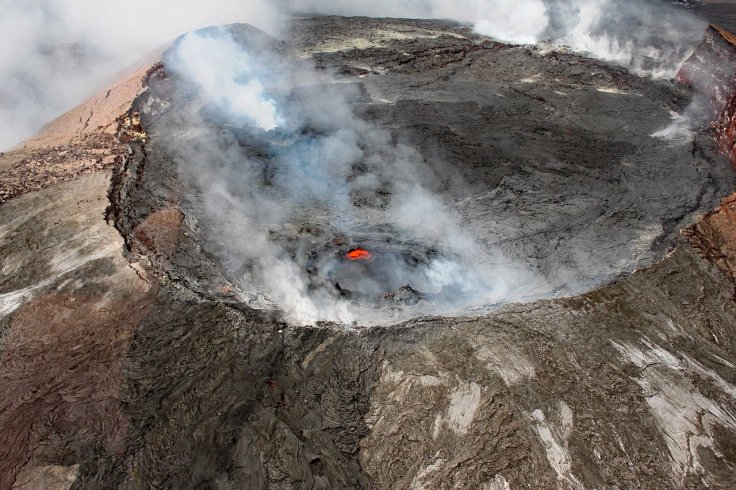Predicting volcanic eruptions has come a long way. With the advancement in technologies, scientists can now predict eruptions better. But even then, the predictions aren't always accurate every time like earthquake forecasts. But that may soon change. A group of researchers has developed a new technique that they call the "holy grail" of volcanology that could lead to accurately predict eruptions.
The new technique involves studying ancient lava crystals that are a result of previous eruptions. For that, volcanologists turned to the Kilauea volcano in Hawaii. They studied samples of crystals that formed inside the rocks spewed by Kilauea during 1959 eruptions. Scientists believe that by combining crystals' usual shapes and computer simulations, underground magma flow and the next eruptions could be predicted.
"I always had the suspicion that these crystals are way more interesting and important than we give them credit for. We can actually infer quantitative attributes of the flow prior to eruption from this crystal data and learn about the processes that led to the eruption without drilling into the volcano," said Jenny Suckale, Professor of geophysics at Stanford's School of Earth, Energy & Environmental Sciences.

'Holy Grail in Volcanology'
Suckale said it was a chance encounter. After listening to Stanford graduate Michelle DiBenedetto's presentation on microplastics in the ocean, she realized that a similar theory could be applied to odd crystal orientations in scoria, a dark, porous rock that forms after lava gets cooled. In the ocean, waves cause non-spherical particles and form an odd but consistent pattern. Suckale observed a similarity in the patterns at Kilauea.
The patterns were created by two waves of magma flow under the surface mobbing in two directions at once. Instead of pouring through the conduit, a hollow column at the center of the volcano, Suckale said that one flow "moved directly on top of the other." During the eruptions, as lava reaches the surface, it gets cooled, trapping olivine crystals, a green mineral. As the process is rapid, the crystals fail to grow, preserving exactly what happened at the time of the eruption.
"That to me is the Holy Grail in volcanology. I always had the suspicion that these crystals are way more interesting and important than we give them credit for," said Suckale, the senior author of the study which was published in Science Advances December 4.

What's Next?
This could unlock a new technique to predict eruptions. Earlier, researchers had speculated that crystals could form inside the cooled lava rocks. But with no direct access to the molten conduit, they had no conclusive evidence. Now, they believe that tracking the misorientation of crystals throughout the future eruptions could be the key to understanding the flow conditions.
"No one knows when the next episode is going to start or how bad it's going to be and that all hinges on the details of the conduit dynamics," Suckale said adding that the data would help in advancing future research. "If I can measure the wave, I can constrain the magma flow and these crystals allow me to get at that wave," she added.









